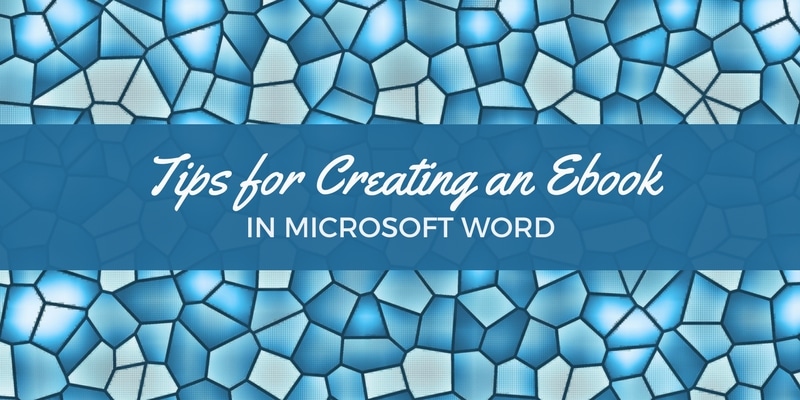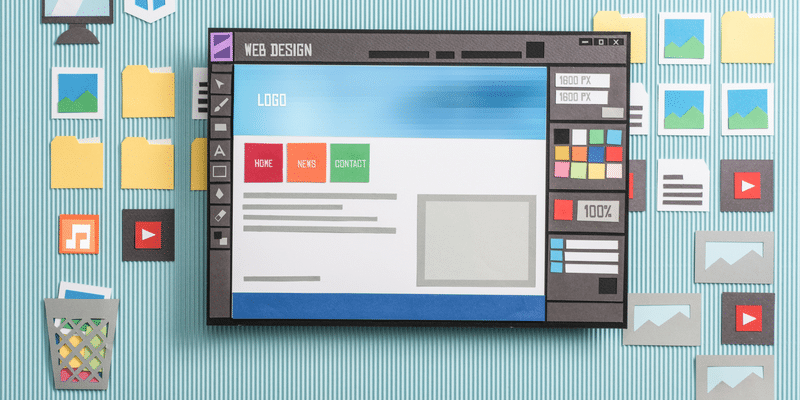An ebook can be a valuable marketing asset. You can use it to encourage your target audience to subscribe to your email newsletter or even sell it for a profit. An ebook can help you generate leads, display expertise in your field and offer additional value to your audience. If you are creating your very first ebook, though, the project may seem daunting.
You can use numerous programs and methods to produce an ebook, but why not use a tool with which you are familiar? If you are comfortable using Microsoft Word for other content creation, you will be pleased to know that you can also use it to create an ebook. Learn some straightforward yet invaluable tips that can help you streamline the process of making one in Word and improve your results.
Cover
Your cover should be both eye-catching and professional. You may wish to outsource the design to a professional or do it yourself using a Photoshop, Canva or another image editing application. Aim for an image that is 1,600 pixels wide by 2,400 pixels tall. If you need help deciding on a color scheme, these tools can help: Free Color Palette Generators.
Next, prepare the page in Word. Select the Page Layout tab, click Margins and choose Narrow.

Go to the Insert tab. Select Picture, find the image you created and click Insert. Click on the image and press Ctrl+E to center it on the page. You can also resize it on the Format tab if desired.
When you have formatted the cover to your liking, click on the bottom of the page after the image. Go to the Insert tab and select Page Break to reset the page formatting to your defaults.

Title Page and More
The beginning of your ebook should include a title page and a copyright page – and acknowledgments and a prologue if you would like to include them.
Your title page can (and really should) be very simple. Press Ctrl+E to center the text on the page or click Center Text in the Paragraph section of the Home tab. Type the title on one line, enter a subtitle on the next if you have one and type the author’s name on the third line. Select the text and click Bold in the Font section or choose a heading style in the Styles box.

Press Ctrl+Enter to add another page break or click Breaks in the Page Setup group of the Page Layout tab and select Next Page under Section Breaks.
Your copyright page should be next, followed by acknowledgments, a preface, and a prologue, if you opt to include these items. Insert a page break after each of these and then start on the table of contents.
Table of Contents
It is super simple to create a hyperlinked TOC in your ebook. Readers can click or tap on a chapter and jump right to it. For this to work, you will need to apply styles to the text in your ebook.
You will need to complete your ebook or at least type up title pages for each chapter before you begin.
Select the title of the first item you want to include in the Table of Contents, such as the first chapter title or the forward. Choose a Heading Style in the Styles section to apply to the title. Add the same style to the titles of each section you want listed in the Table of Contents.
Next, click on the page where you want to add the Table of Contents. Go to the References tab, click Table of Contents and choose an Automatic Table option. Word automatically creates the table linked to the headings.

Headers and Footers
A header displaying the title of the book and footers listing the page number make your ebook look even more polished.
On the first page of the ebook chapters, go to Insert tab, select Header and choose Edit Header. Type the title of your ebook, select the text and click Center in the Paragraph section of the Home tab. Alternatively, you can add chapter titles to the header. Just make sure to insert page breaks between chapters and click Link to Previous to remove the link from the previous section
Next, select Footer on the Insert tab and choose Edit Footer. Select Page Number, select Bottom of Page and click on the page number style you want to use.

Links
One of the advantages of ebooks is that you can include links to online content. Readers can click through to your website or other web resources.
The quickest way to add a link in Word is to select the text you want to add a link to, press Ctrl+K and type the web address into the Address field of the Insert Hyperlink box.

Create A PDF
Word also makes it simple to save your ebook document as a PDF. This enables you to produce an ebook that can be read using and looks the same on most devices while complying with the industry format.
To save your ebook as a PDF, go to the File tab, click Export and choose Create PDF/XPS. Navigate to where you want to save the file in the Publish as PDF or XPS dialog and change the file name if desired. Click Publish to save the PDF file.

Test Run
It’s a good idea to test your ebook on multiple devices before sending it out into the world. Check it out on different computers, tablets, and phones to make sure everything looks as it should, and your links work properly. Ask family and friends to check it out for you, as well.
Make A Template
Plan to make more ebooks in the future? Make it easier on yourself by turning your current product into a template. Delete contents of chapters or fill in the text of the introduction and acknowledgment section with lorem ipsum text as a placeholder. Change the chapter names to numbers, as well.
When it is good to go, go to the File tab and select Save As (or press the F12 key) to open the Save As dialog. Type in a name for your template (ebook Template is pretty straightforward). Select Word Template in the Save as Type box and click Save. You will find it in the Available Templates list under My Templates when you need to use it again.

Making an ebook can be less demanding or intimidating than you think. Consider converting blog posts on a specific topic, a course or other existing content into an ebook that your audience will appreciate. Thanks to Word, you can have it put together and transformed into a PDF in no time.
Looking for other options to use for ebook writing and design? Check out The Best Apps For Creating Ebooks.

Writer, editor and client advocate specializing in reputation management, content marketing, technology and non-profit topics.




